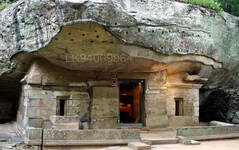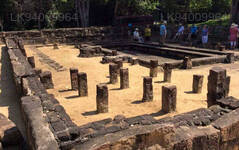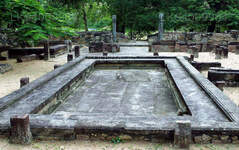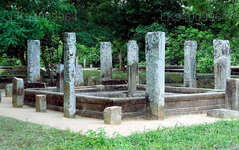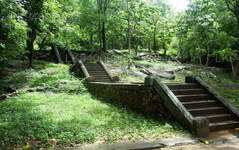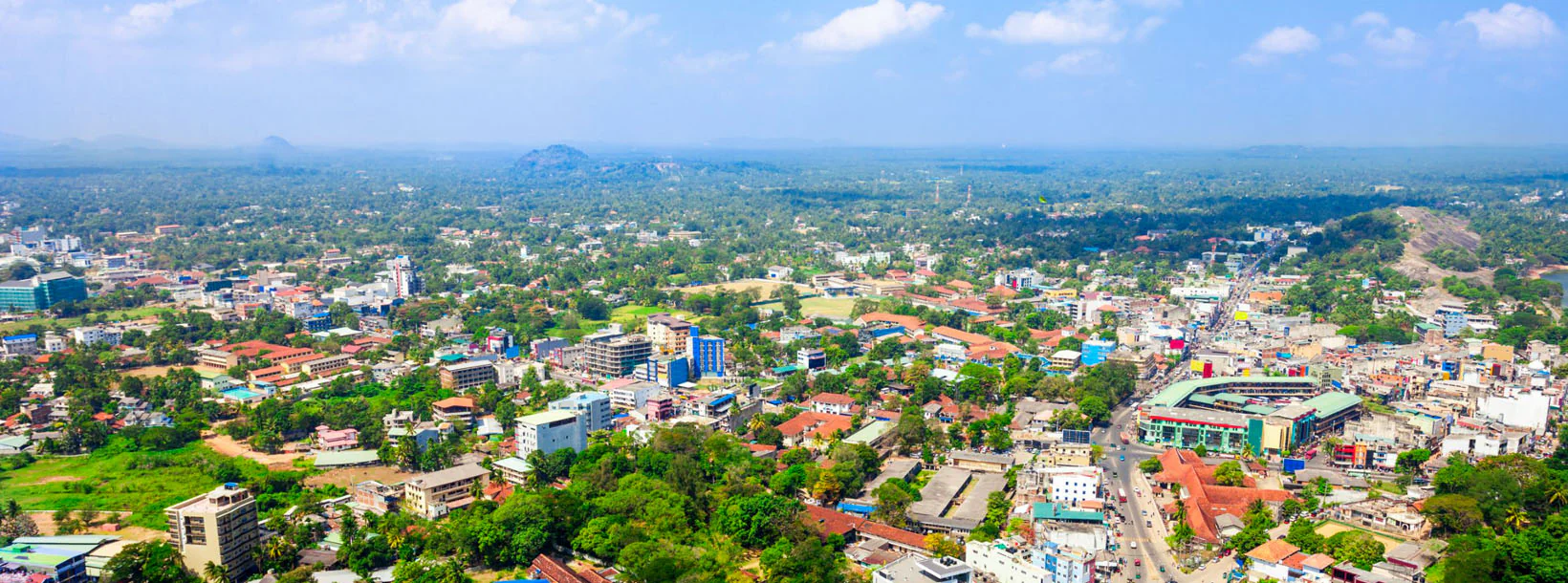
Kurunegala City
Kurunegala: Bustling city in Sri Lanka's North Western Province, featuring historic sites, vibrant markets, and a blend of modern and traditional culture.
Arankele Monastery
Arankele Monastery in Sri Lanka is a forest monastery with caves that lie at a distance of 117km from Colombo.
Arankele Forest Monastery, an archaeological site, can be reached by the Colombo- Kurunegala- Ibbagamuwa- Moragolla road.
Arankele Monastery in Sri Lanka: Setting
Arankele Monastery in Sri Lanka was a 6th-century cave hermitage situated up a forested hillside. The densely wooded terrain crowded with huge hardwood trees is interspersed by the openings and clearings created by the on-going process of clearing scattered debris to unearth the ruins and re-erecting the fallen ruins.
Arankele Monastery in Sri Lanka: Rock Caves
On the slopes of the hill containing Arankele Monastery in Sri Lanka is a cluster of natural rock caves once used by monastic monks for shelter and meditation. Though remain rough outside with the exception of the drip ledges, the interior walls are well plastered with lime.
it was the site of an ancient forest monastery – the austere abode of a sect of recluse monks who had been attracted to this site because of its very isolation and seclusion. The building at the entrance of the Arankele site has been identified as a Jantagara or hot water bath with the dimensions of 100ft in length and 60ft in breadth. There also vestiges of grinding stones that had been used to prepare herbal medicines in the past. Among the other ruins that have been identified are meditating promenades, ponds, and long winding pathways.
Long pathways that cut across the dense forest lead to stone-carved drip-ledges and caves used for mediation, alms-giving halls, and bathing ponds that testify to the excellent works of the craftsmen of that day and age.
Arankele Monastery in Sri Lanka: Architecture
Ancient stone slabs of inscriptions in Brahmi script have revealed the existence of meditation halls, stone-faced double platform structures, and ambulatories for the austere Buddhist monks living in Arankele Monastery in Sri Lanka. The platforms aligned in the east-west axis consist of the entrance porch to the east bridged by a large monolith. The smaller of the double platform structure herein, the roof being supported on columns, has the impression of being divided into cells for the monks. The purpose of the construction of double platforms hasn’t been yet determined though some scholars are of the opinion those were used for meditation, ceremonies, and teaching.
In line with the severe simplicity and austere religious practices of Arankele Forest Monastery, the building had been built with no pretensions to decorations. Furthermore, stupas, shrines, and statues found in the ancient urban monasteries aren’t found here either. The exception to the minimalist architecture is the existence of urinal stones decorated with carvings. The purpose of the practice of decorating urinal stones hasn’t been established.
Arankele Monastery in Sri Lanka: Hot water baths and grinding stonesArankele Monastery in Sri Lanka is home to the largest hot water pond in Sri Lanka. It is around 100ft in length and 60ft in breadth. Also seen are vestiges of grinding stones that had been used to prepare Ayurvedic medicines. All these ruins now being unearthed testifies to the existence of a large Ayurvedic hospital which was present in the monastery.
For more in depth details on religious places, visit our page on Buddhist sites in Sri Lanka.
About Kurunegala District
Kurunegala is the capital of the Wayamba Province in Sri Lanka and the Kurunegala District.Kurunegala was a royal capital for only 50 years, from the end of the 13th century to the start of the next, though even before this it was strategically placed in the middle of other majestic strongholds such as Yapahuwa to the north, Dambadeniya to the south and Panduwasnuwara in the east. Ethagala a rock reaching 316 meters, towers over the town, which is located at an altitude of 116 meters above sea level. The shape of Ethagala resembles an Elephant. A transport hub, it has a railway station, and several main roads linking important parts of the country.Kurunegala is situated about 94 km from Colombo, and 42 km from Kandy.
Most of Kurunegala's residents belong to the Sinhalese majority. Other ethnic minorities include the Sri Lankan Moors, Sri Lankan Tamils, Burghers and Malays. Residents from ethnic minorities live in all parts of the city, however, sizeable communities of Moors and Tamils also live in the areas of Teliyagonna and Wilgoda.
About North Western Province
North Western Province is a province of Sri Lanka. The districts of Kurunegala and Puttalam formulate North Western or Wayamba. Its capital is Kurunegala, which has a population of 28,571. The province is known mainly for its numerous coconut plantations. Other main towns in this province are Chilaw (24,712) and Puttalam (45,661), which are both small fishing towns. The majority of the population of Wayamba province is of Sinhalese ethnicity. There is also a substantial Sri Lankan Moor minority around Puttalam and Sri Lankan Tamils in Udappu and Munneswaram. Fishing, prawn farming and rubber tree plantations are other prominent industries of the region. The province has an area of 7,888 km² and a population of 2,184,136 (2005 calculation).
Wayamba is the third largest paddy producing area in Sri Lanka .Wayamba has a highly developed agricultural economy, growing a variety of fruits and vegetables, flowering plants, spices, oil-seeds in addition to the traditional plantation crops such as Coconut, Rubber and Rice. Rich soils and varied climate give Wayamba a potential for growing of virtually any crop.
In Wayamba or North western province, home for ancient Buddhist rock temples, magnificent citadels Panduwasnuwara, Dambadeniya, Yapahuwa and Kurunegala. Impressive remains of those citadels, palaces, Buddhist temples and monasteries provide exciting sight seeing to the visitors.
【Text by Lakpura™. Images by Google, copyright(s) reserved by original authors.】

